Summary: Software projects are an integral part of almost all businesses now. They pose specific challenges and might not always be easy to implement. Ironically, the success rate of software projects doesn’t seem to match the exponential growth of the tech industry itself. Failure in software project implementation can be frustrating and is not an option when the core working of so many businesses hinges on that. The following content attempts to point out why software projects fail and some solutions to address these failures.
Did you know that two-thirds of all software projects end in partial or total failure? The Standish Group discovered this when they analyzed over 50,000 technology projects.
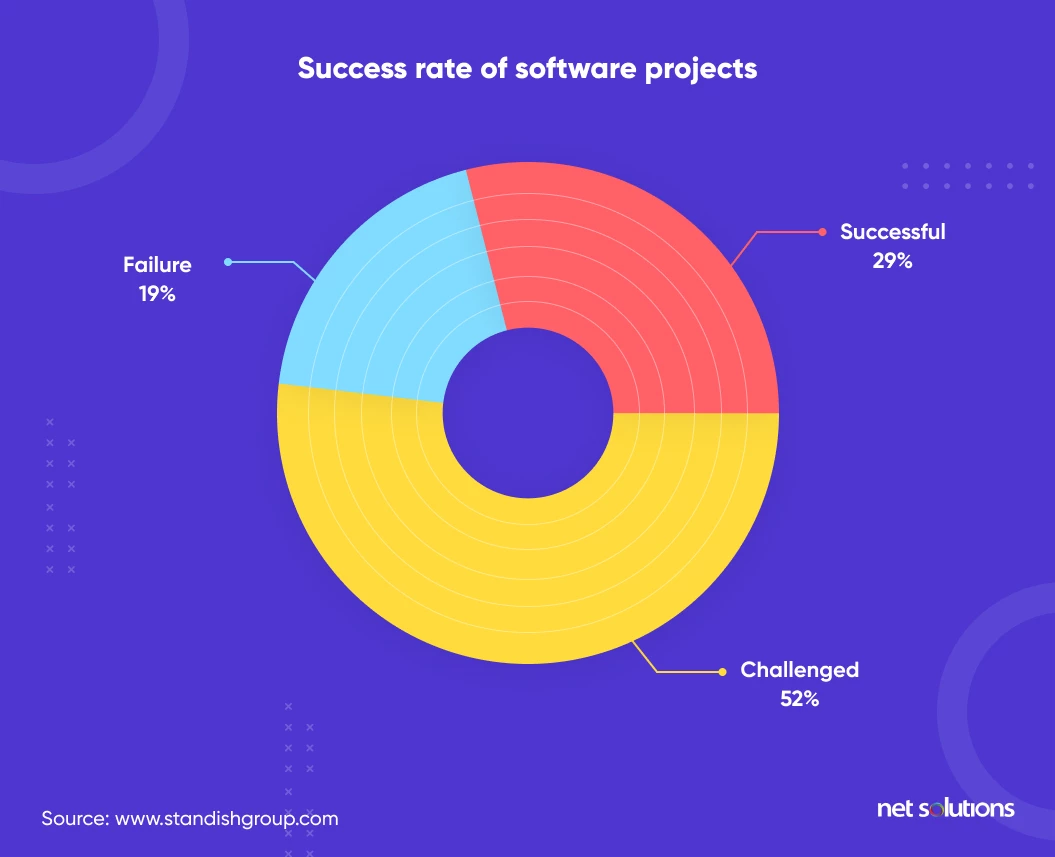
When you stop and think about everything that goes into a software development project— thousands of lines of code, multi-department communication across the software development company, and potential conflicts & clashes — it’s easy to see why so many software projects come undone.
The good news is that there are tried and tested techniques that will help you orchestrate your software projects and deliver on time & within budget. That’s exactly what we’ve been doing here at Net Solutions for the past 20+ years, predominantly backed by our agile software development methodology and human-centric design thinking.
It all starts with acknowledging the common pitfalls, addressing them, and managing your software projects in a way that increases your odds of success. With this in mind, we have not only worked to create software development checklists but also guides on the most common reason why software projects fail. That way you can review these points of failure regularly, keep them top of mind, and make a plan to address them.

We respect your privacy. Your information is safe.
Wayward Time & Cost Projections
The first category of reasons software projects fail is related to timelines and cost projections.
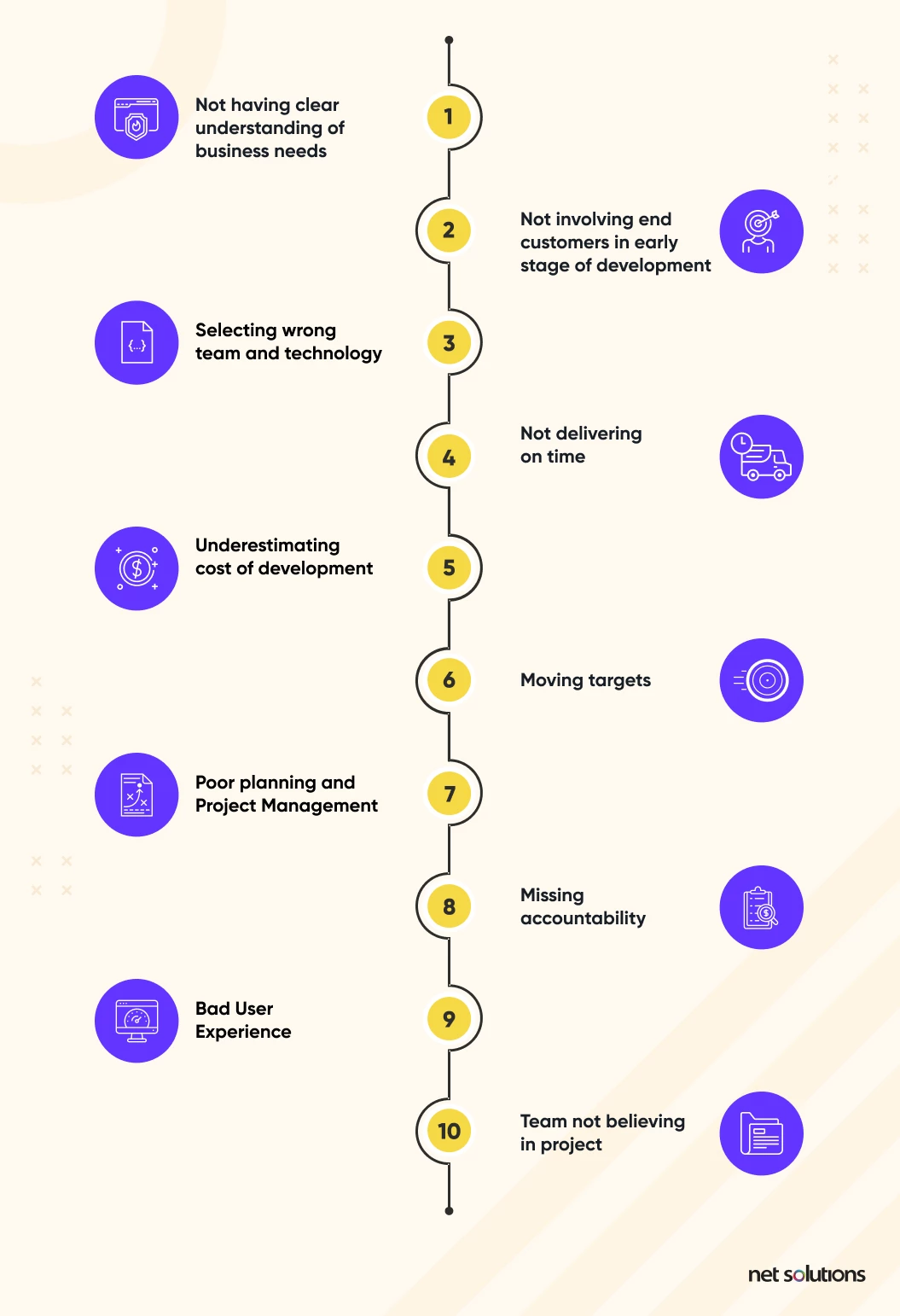
1. Unrealistic Timelines
One of the biggest reasons software projects fail is that Project Managers agree to unrealistic timelines. It’s a Project Manager’s job to have frank discussions with executives after carefully weighing the resources available to each team. After all, nothing is more demotivating than a timeline that’s impossible to meet.
Solution: Speak up! Project Managers need to resist the temptation to “people please.” It’s a tough job, but organizations hire Project Managers to provide realistic assessment of project timelines.
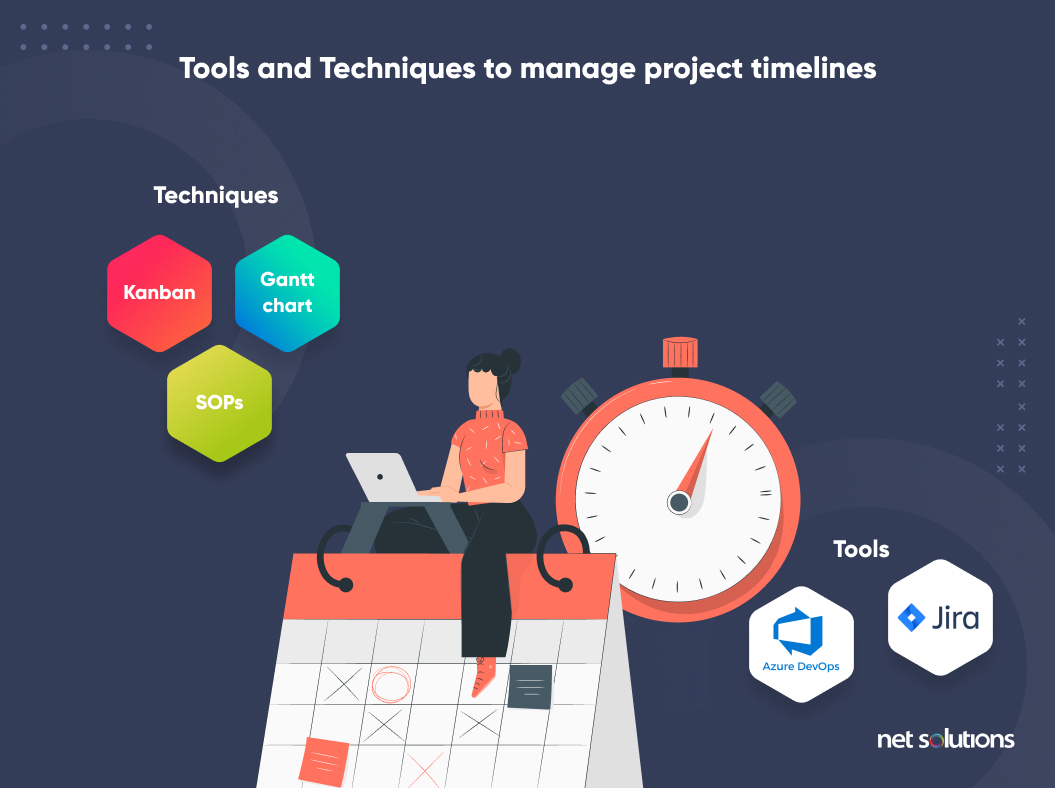
2. Scope Creep Mismanagement
Designers and Developers are creative by nature, and when they dive into a project, it can be tempting to start tweaking everything and build something much larger than the project plan. Software, after all, is quite malleable—but since resources aren’t infinite, the software is not infinitely malleable.
Solution: Resisting scope creep requires clearly stated goals, consistent communication, and a willingness to say “no” when demands become unrealistic and extend beyond the project’s scope.
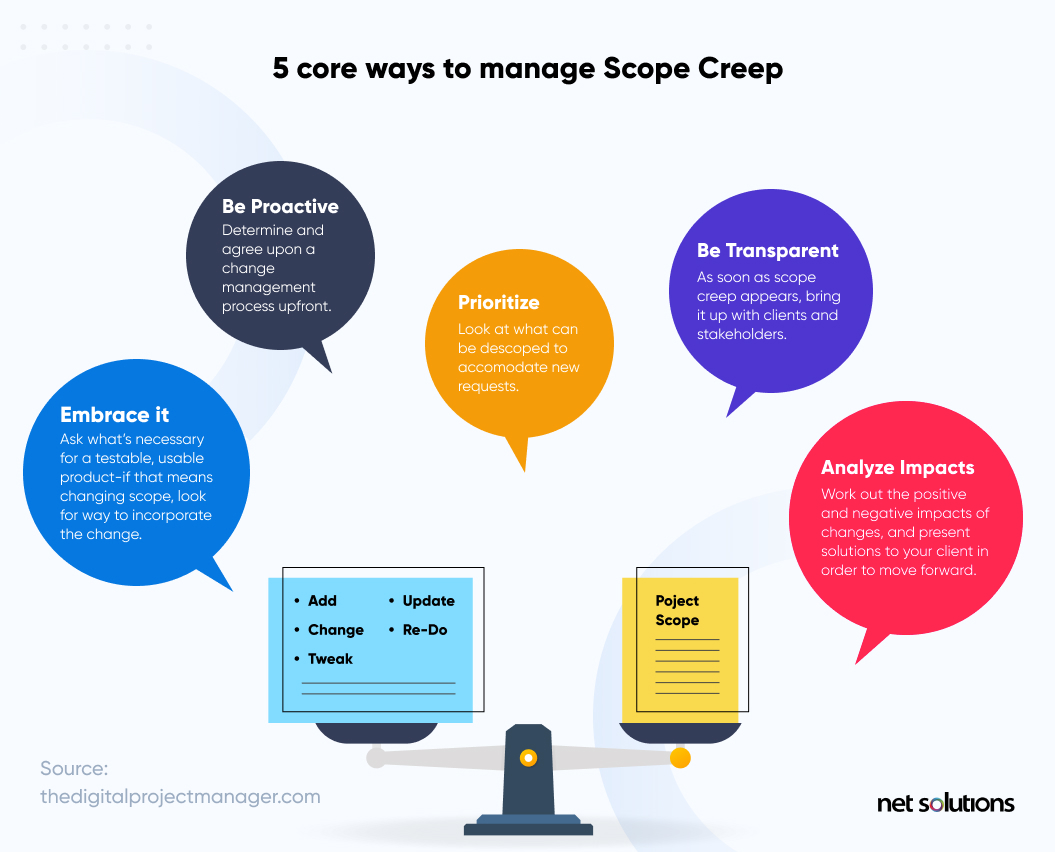
3. Poor Backlog Management
Managing our backlog properly is an essential element of effective, on-time delivery. Some teams prioritize things they shouldn’t prioritize, fearing that placing items on their backlog is somehow giving up.
Solution: Use your backlog and review it regularly.
4. Not Considering Cost of Delay
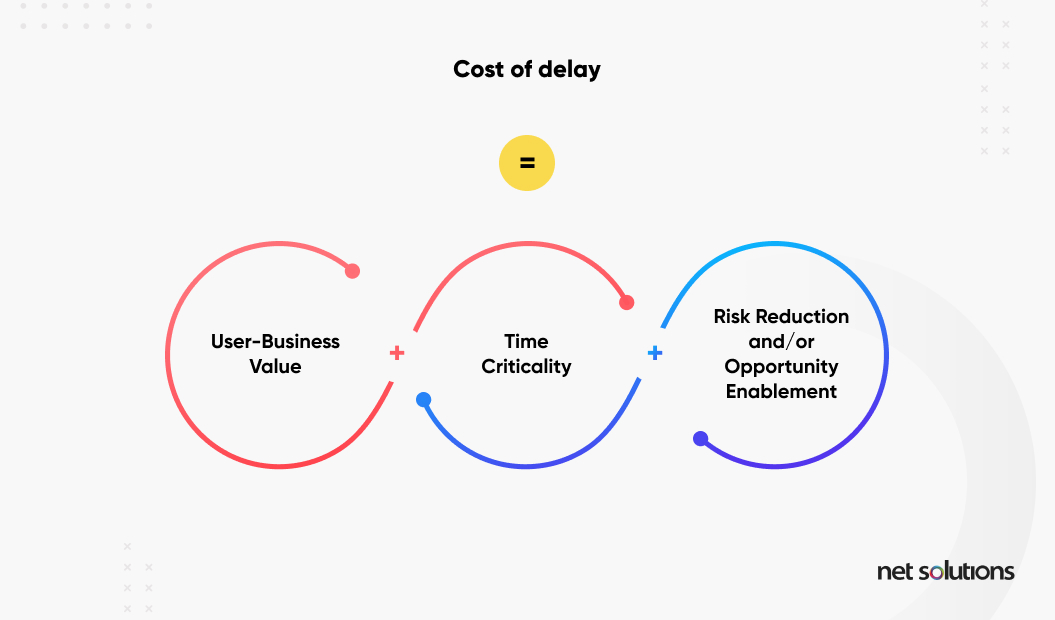
Cost of Delay (CoD) measures the monetary impact that the failure to deliver a project on time would have on the company. Calculating this figure and communicating it to your software teams will keep it top of mind and encourage on-time delivery.
Solution: Calculate the Cost of Delay and communicate it to everyone involved.
5. Considering Discovery and Delivery Processes Independently
Discovery is a key component of software design and development, but some teams forget to factor it into the timeline of their project plan. This can easily impact your ability to meet your delivery date.
Solution: Always factor discovery into your project plan.
Ineffective Project Management
Ineffective project management will take its toll on your products. Here’s how to overcome it.
6. Failure to Employ a Robust Testing Strategy
All software has bugs, but the more you can eliminate serious errors, the better your project will turn out. That’s where Quality Assurance (QA) comes into play.
Solution: Implement a robust testing strategy that addresses as many edge cases as possible, introducing data that mimics the more extreme conditions your software will encounter in the live environment.
7. Unclear Minimum Viable Product (MVP) Requirements
Setting clear MVP requirements from the start is absolutely essential to delivering your MVP on time and ensuring it serves its purpose. One mistake many teams make is to begin development work without clearly establishing what the MVP must achieve. Without a clear path forward, this can lead to scope creep (see above) that wastes time, or it can result in an MVP that isn’t so viable at the end of the day.
Solution: Set the parameters for your MVP during the design phase and clearly communicate them to the Development team.
8. Accumulating Technical Debt
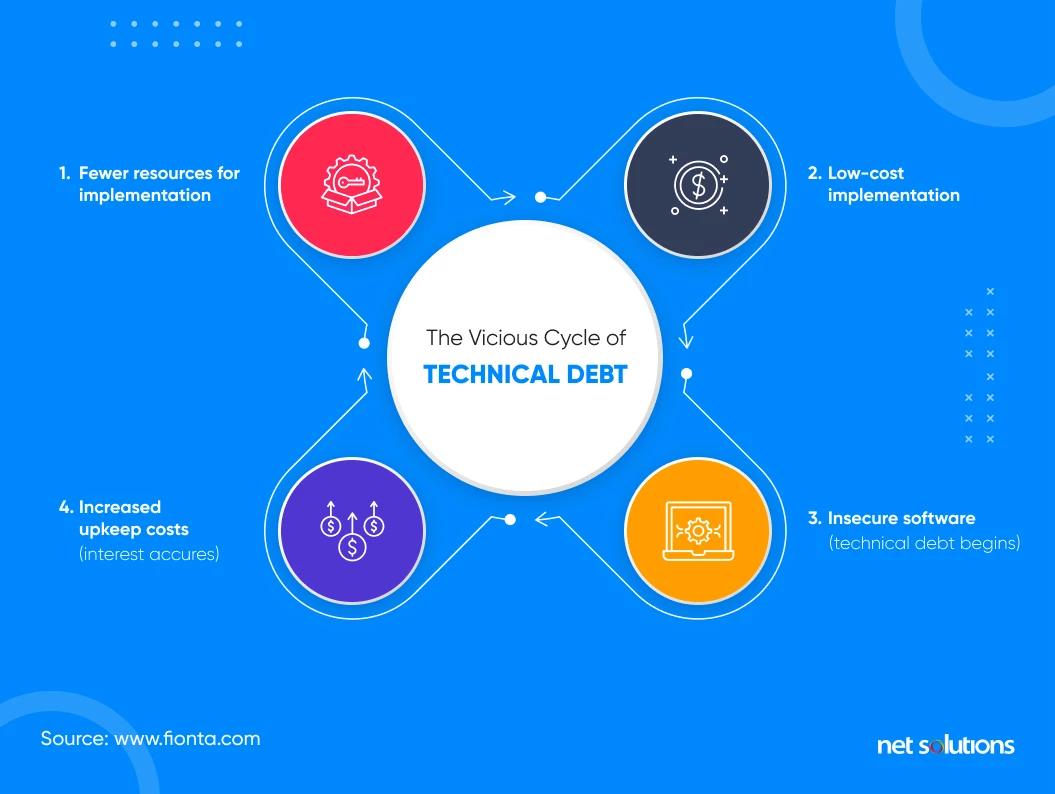
Technical debt is what happens when you use shortcuts or quick fixes to expedite software development—planning to fix and streamline the code later. Sometimes this is necessary, but too much tech debt can create serious problems, subpar software, and can be a big reason your software software project fails.
Solution: Keep track of technical debt and keep it to a minimum.
9. Poor Task Prioritization
Left to our own devices, we humans are sometimes poor priorities—in life and in software creation. The mind finds problems it wants to solve and it digs deep in its search for a solution, but sometimes we need to take a step back and determine which items are most vital to address.
Solution: Employ strong project management skills and engage in regular communication to shine a light on where each team and each team member is focusing.
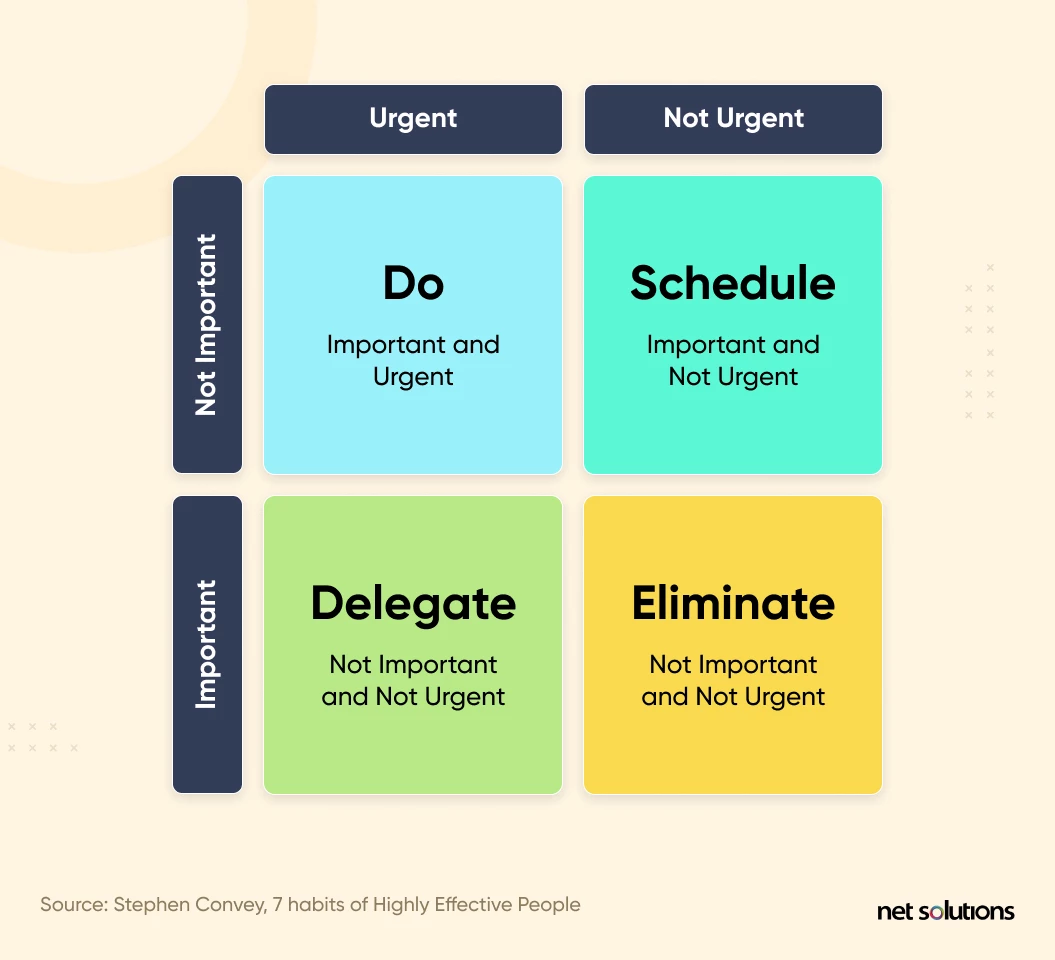
10. Team Sizing Gaps
There’s a concept called the Ringelmann Effect, which states that the average individual contribution is reduced for every developer added to a team beyond 5 or 6. That’s because as teams grow, they require more communication and higher levels of the organization, which drags down overall performance. What’s more, large gaps in team sizes will exacerbate this problem.
Solution: There are times when you need larger teams. Generally speaking, however, if you keep teams to a manageable number and ensure that the gaps between team sizes aren’t ridiculous, you can ensure steady production.
11. Failing to Maintain a Sustainable Pace
Speed is an important aspect of on-time delivery since software projects require a coordinated effort to keep different teams working harmoniously. If a steady pace isn’t maintained across different teams, your odds of success dwindle and your software project fails.
Solution: Strong communication across teams and comprehensive project management.
12. Relying on Boat Anchors
A boat anchor describes a part of a software system that developers mistakenly keep in place because they think they’ll need it later—even though it’s not being used and they’ll probably never need it. This leads to bloated code, which is never a good thing.
Solution: Encourage Developers to look honestly at their code and remove all boat anchors.
Lack of Cross-team Communication & Collaboration
Communication is essential in any business—and it’s imperative, when it comes to software creation.
13. Lack of Communication
Have you heard the old joke about how to spot an extroverted software engineer? The extrovert is the one staring at your shoes instead of their own.
Most developers (and designers) would rather just zero on their work in all their introverted glory, but communication is vital for coordinating and producing superior software.
Solution: Hold daily standup meetings and encourage regular communication.
14. Developer Skill Set and Project Requirements Mismatch
In a rush to get things done, team leads sometimes assign tasks that are beyond a Developer’s skill set at that time. The Developer might be reluctant to communicate their struggles, leading to false starts and production delays.
Solution: Create clear, open lines of communication between team leads, Project Managers, and team members. Encourage team members to speak up when they’re struggling.
15. Failure to Understand Requirements
Sometimes requirements aren’t clear, and if teams or team members don’t feel comfortable expressing their confusion, they could waste a great deal of time going down the wrong path.
Solution: Once again, encourage open, honest communication.
16. Gaps in Cross-Collaboration
Teams can frequently silo themselves, and the left hand doesn’t know what the right hand is doing. This can result in delays and rework.
Solution: Encourage regular communication across different teams and follow a DevOps model.
17. Missing Collective Ownership
One problem large organizations can sometimes face is the dilution of responsibility, where nobody takes ownership for collective misses.
Solution: Project Managers must encourage everyone to take ownership and think about the big picture.
18. Missing Retrospectives
In Agile development, retrospectives are meetings where team members analyze and highlight anything that went wrong in the previous sprint so they can learn from the experience. Skipping those meetings makes it impossible to improve.
Solution: Don’t skip retrospectives.
19. Scope Stretching/Gold Plating
Scope stretching, also known as gold plating, happens when developers try to deliver more than expected according to the project plan—hoping to delight the customer. This can waste resources better spent on things like getting the MVP up to par.
Solution: Ensure everyone understands the dangers of gold plating and how doing so can cause you to neglect essential elements of the MVP.
Inability to Evolve with the Changing Market
Software development has changed over the years, and successful companies integrate the most effective practices.
20. Relying on Traditional Software Development Methodology
Traditional software development methodologies, like Waterfall, sometimes have their place—but Agile-based systems produce better results in most cases. Agile and similar methodologies provide the flexibility you need to create a product that can be refined according to user feedback.
Solution: Carefully consider your methodology before beginning.
21. Choosing the Wrong Tech Stack
Choosing the wrong tech stack can make it difficult to deliver the software product you envision, and it can greatly delay development.
Solution: Before beginning any development work, consider the tech stack you’ll use in light of your scope, timeline, features, etc.
22. Relying on the Project Mindset
A project mindset focuses exclusively on delivery dates. By contrast, a product mindset ultimately focuses on creating an amazing product. It emphasizes business outcomes, customer satisfaction, and reduced friction within the company.
Solution: Encourage a product mindset over a project mindset.
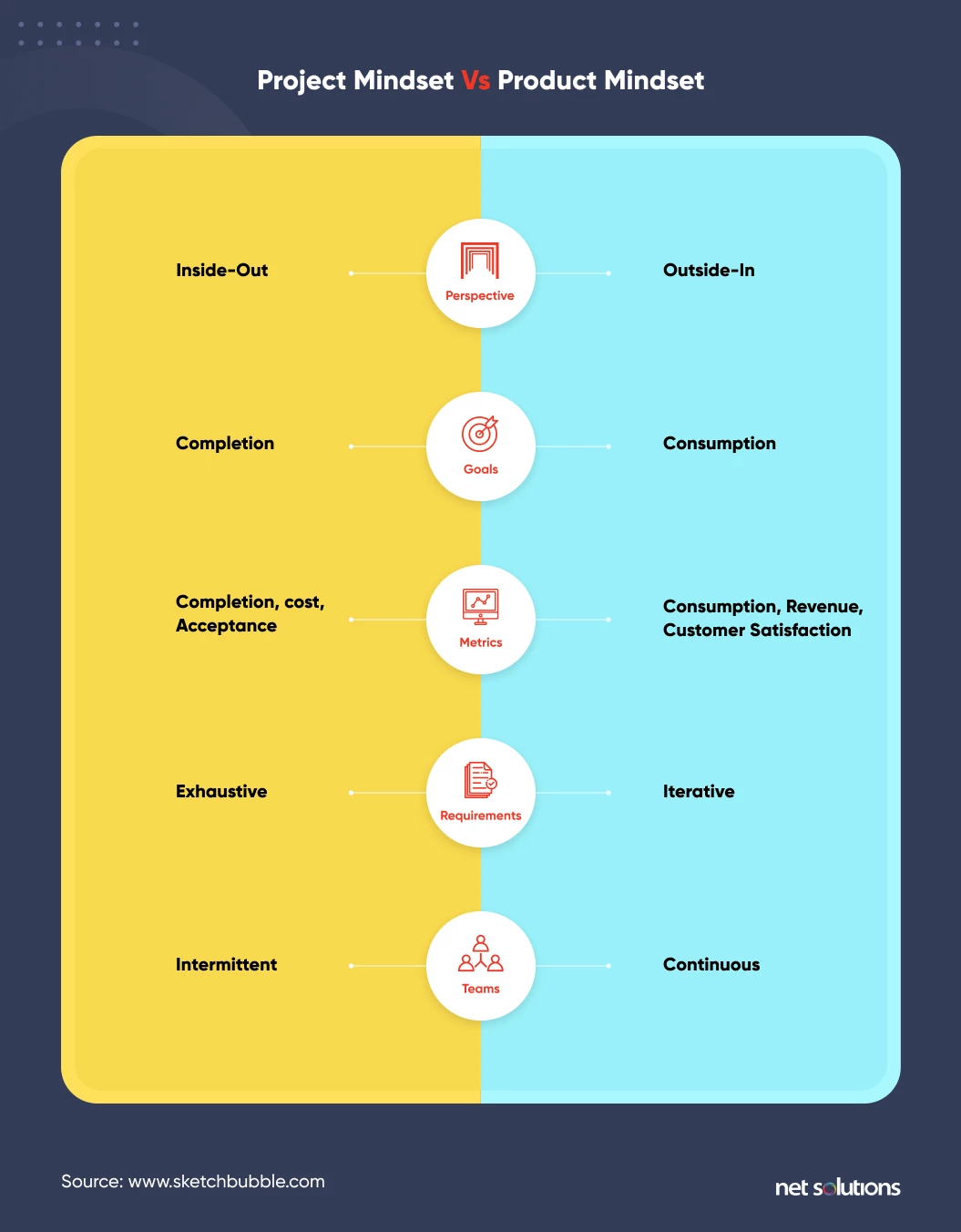
23. Failing to Adapt to the DevOps Culture
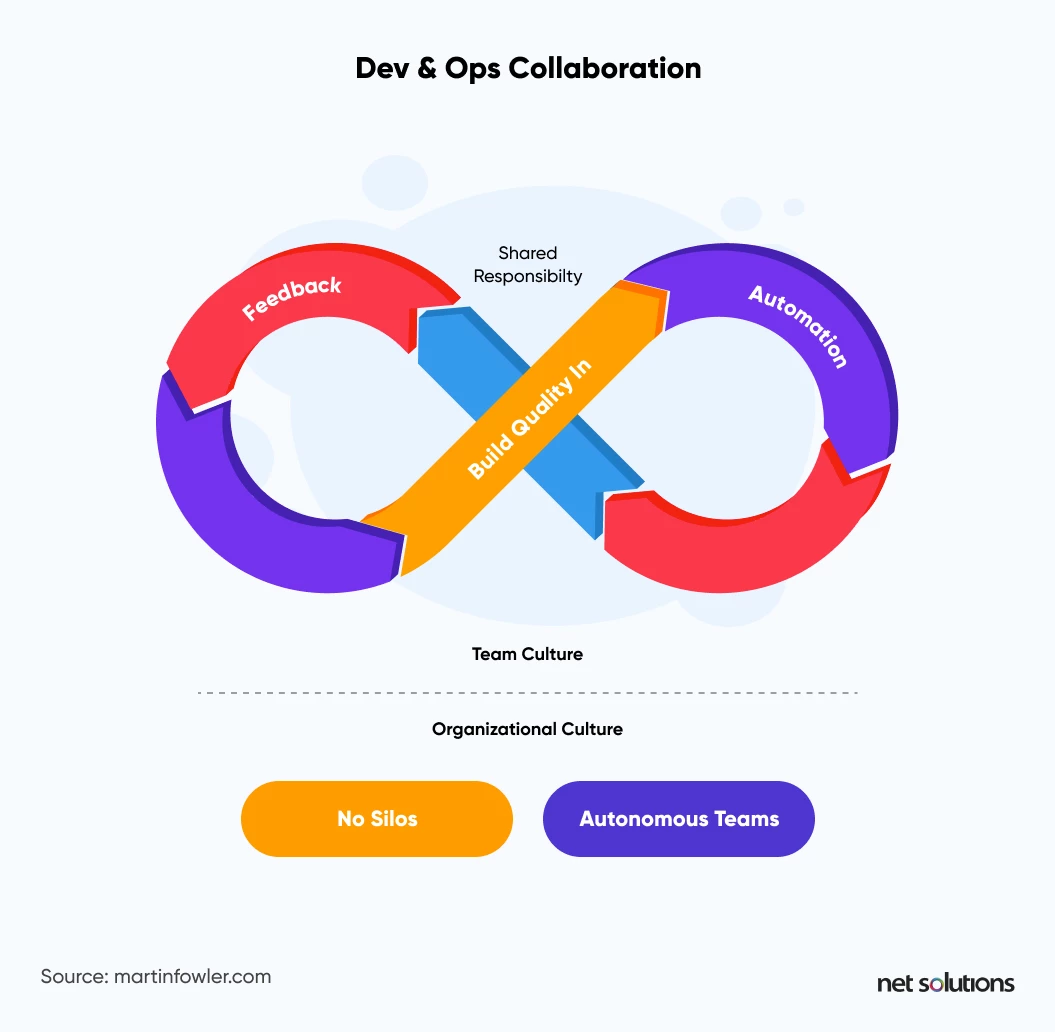
Taking a DevOps approach to your software development process ensures organizational alignment, especially between Developers and IT. Failing to adopt and adapt to a DevOps culture can make it difficult to deliver solid software products.
Solution: Ensure that everyone in the organization understands the role DevOps plays, and educate all new hires about your DevOps culture.

We respect your privacy. Your information is safe.
Looking to Support your Design, Development, or QA Efforts?
If you’re considering outsourcing any part of your software development process, contact us here at Net Solutions. We’ve brought thousands of software products to life over the past two decades, and we know how to gel with existing teams.
The end result? Powerful software products, delivered on time and within budget.
Frequently Asked Questions
Software is everywhere – in the minutest of functions happening in our lives. Therefore the results of software development projects are deep-rooted. The results could range from severe financial loss, time or resources, or in extreme cases, all of them. When a project fails, it hits an organization’s prospects. If the failure is enormous enough, it could ruin the company’s entire future – software failure in the government, for example, can even imperil national security. IT failures can also stunt economic growth and quality of life.
An organization needs to lay down timelines and project deadlines very specifically. Clarity on costing, vendor information needs, design, and processes helps succeed with software development projects. Build a team with the right technical & work skills, and clearly define the success parameters so they have specific goals to follow. User feedback, iterations based on repeated testing, and keeping an eye on the internal milestones will diminish the failure rates.
Most of you might remember Tik-Tok’s glitch of resetting followers to zero – software failure! Other incidents are customers of French bank LCL logging in to see somebody else’s information, loopholes in Amazon’s internal leave processes, and the collapse of Facebook, Instagram, and WhatsApp services because of internal tech communication & access issues. The attack on Colonial Pipeline in the US disrupting fuel supply has been another example. As also recall of about 12000 vehicles by Tesla, failure of Fastly leading to internet collapse in the UK, and feature issues in Call of Duty due to a glitch by Raven Software.





